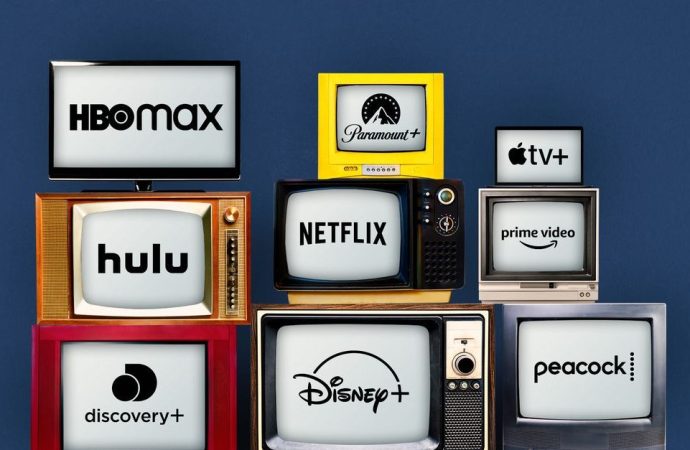Introduction In the past decade, the entertainment landscape has undergone a seismic shift. The rise of streaming services has transformed how audiences consume content, posing significant challenges and opportunities for traditional TV networks. This article delves into the multifaceted impact of streaming services on traditional TV networks, examining the evolution of viewership habits, revenue models,
Introduction
In the past decade, the entertainment landscape has undergone a seismic shift. The rise of streaming services has transformed how audiences consume content, posing significant challenges and opportunities for traditional TV networks. This article delves into the multifaceted impact of streaming services on traditional TV networks, examining the evolution of viewership habits, revenue models, content creation, and the future of the industry.
The Rise of Streaming Services

Image by: Google.com
- A Brief History
Streaming services, such as Netflix, Hulu, and Amazon Prime Video, have revolutionized the way we watch television. What began as a novel concept of delivering content over the internet has now become a dominant force in the entertainment industry. Netflix, which started as a DVD rental service in 1997, transitioned to streaming in 2007, setting the stage for a new era of on-demand viewing.
- The Appeal of Streaming Services
The appeal of streaming services lies in their convenience and flexibility. Unlike traditional TV networks, which adhere to fixed schedules, streaming platforms allow viewers to watch content anytime, anywhere. This on-demand model caters to the modern viewer’s desire for instant gratification and control over their viewing experience.
- The Subscription Model
Most streaming services operate on a subscription-based model, offering a wide range of content for a monthly fee. This model contrasts with the ad-supported revenue streams of traditional TV networks, providing a different economic framework that has proven highly successful.
The Decline of Traditional TV Networks

Image by: Google.com
- Changing Viewership Habits
The rise of streaming services has led to a significant decline in traditional TV viewership. According to Nielsen, the average time spent watching traditional TV has decreased, particularly among younger demographics. This shift has forced TV networks to rethink their strategies to retain and attract viewers.
- Cord-Cutting Phenomenon
The term “cord-cutting” refers to the trend of consumers canceling their cable subscriptions in favor of streaming services. This phenomenon has accelerated in recent years, with millions of households opting for internet-based entertainment options. The convenience, cost-effectiveness, and diverse content offerings of streaming services are key drivers of this trend.
- Impact on Advertising Revenue
As viewership of traditional TV declines, so does advertising revenue. Advertisers are reallocating their budgets to digital platforms where they can reach a more targeted audience. This shift has put financial pressure on TV networks, compelling them to explore new revenue streams and business models.
Content Creation and Distribution

Image by: Google.com
- Original Content
One of the most significant impacts of streaming services on traditional TV networks is the emphasis on original content. Streaming platforms have invested heavily in producing exclusive shows and movies to differentiate themselves from competitors. This investment has led to a golden age of television, with high-quality, diverse content that often surpasses what traditional networks offer.
- Binge-Watching Culture
Streaming services have popularized the concept of binge-watching, where entire seasons of a show are released at once. This model contrasts with the weekly episodic releases of traditional TV networks. Binge-watching has become a cultural phenomenon, influencing how content is produced and consumed.
- Global Reach
Streaming services have a global reach, allowing content to be distributed worldwide with ease. Traditional TV networks, on the other hand, often face geographical restrictions and licensing issues. This global accessibility has enabled streaming platforms to tap into international markets and diversify their audience base.
The Response of Traditional TV Networks

Image by: Google.com
- Hybrid Models
In response to the rise of streaming services, many traditional TV networks have adopted hybrid models. They have launched their own streaming platforms, such as NBC’s Peacock and CBS All Access (now Paramount+), to compete in the digital space. These hybrid models aim to combine the strengths of traditional TV with the flexibility of streaming.
- Strategic Partnerships
Traditional TV networks are also forming strategic partnerships with streaming services to expand their reach. For example, Disney acquired a majority stake in Hulu, leveraging the platform to distribute its content. Such collaborations help TV networks stay relevant in a rapidly evolving industry.
- Investment in Technology
To compete with streaming services, traditional TV networks are investing in technology to enhance the viewer experience. Innovations such as high-definition broadcasts, interactive TV, and personalized recommendations are being implemented to attract and retain viewers.
The Future of TV Networks in the Streaming Era

Image by: Google.com
- Adaptation and Innovation
The future of traditional TV networks lies in their ability to adapt and innovate. Embracing new technologies, exploring diverse revenue streams, and creating compelling content will be crucial for survival. The lines between traditional TV and streaming are blurring, and networks must evolve to stay competitive.
- Regulatory Considerations
As the entertainment landscape changes, regulatory considerations will play a role in shaping the future of TV networks and streaming services. Issues such as content licensing, net neutrality, and data privacy will need to be addressed to ensure a fair and competitive market.
- Consumer Choice
Ultimately, the future of TV networks and streaming services will be determined by consumer choice. Viewers will gravitate towards platforms that offer the best value, convenience, and content. The competition between traditional TV and streaming services will drive innovation and improve the overall viewing experience.
Conclusion
The impact of streaming services on traditional TV networks is profound and far-reaching. While streaming platforms have disrupted the industry, they have also spurred innovation and elevated the quality of content available to viewers. Traditional TV networks face significant challenges, but with strategic adaptation and a focus on delivering value to consumers, they can continue to thrive in the evolving entertainment landscape. The future promises a dynamic interplay between traditional TV and streaming services, ultimately benefiting audiences with more choices and better content.
















